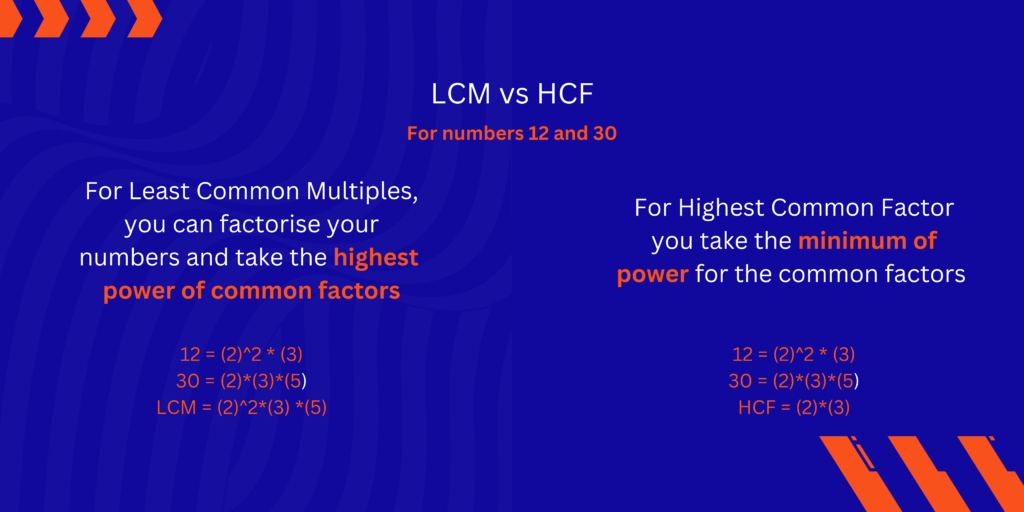This blog notes down all key concepts to remember to be able to use the LCM aka Least Common Multiples and Highest Common Factor for problem-solving questions in GMAT. Many GMAT Data Sufficiency problems will need the know-how of the number properties so we can infer if sufficient information is available or not.

Least Common Multiple Definition
LCM stands for least common multiple for a set of numbers. This is the smallest number which is divisible by each number in the set. To compute the LCM for a set of numbers, we can follow the following steps. e.g. We will take numbers 12 and 30 and try to find their LCM.
- Prime Factorise: The first step would be to prime factorise all the numbers in the set. The prime factors for 12 and 30 are:
- 12 = (2)^2 * (3)
- 30 = (2)*(3)*(5)
- Highest Power: Now we take the maxima of the highest power for each of the prime factors. We have 3 prime factors: 2, 3, 5.
- LCM = (2)^2*(3)*(5) = 60
Highest Common Factor Definition
The HCF aka the highest common factor stands for the common factor for a set of numbers. This is the largest number that divides all numbers in the set. To compute the HCF, we can follow the following steps. e.g. We will take numbers 12 and 30 and try to find their HCF.
- Prime Factorise: The first step would be to prime factorise all the numbers in the set. The prime factors for 12 and 30 are:
- 12 = (2)^2 * (3)
- 30 = (2)*(3)*(5)
- Lowest Power: Now we take the minima of the powers for each of the prime factors which are common between the numbers. We have 3 prime factors: 2, 3, 5. We take the common powers for the factors. The lowest power for 5 is 0.
- HCF = (2)*(3)*(5)^0 = 6
This the basic summary for LCM & HCF as far as GMAT is concerned, being aware of these two properties should get you started on GMAT Data Sufficiency Questions well when it comes to these two!
Feel free to reach out to us, in case of questions through discord
